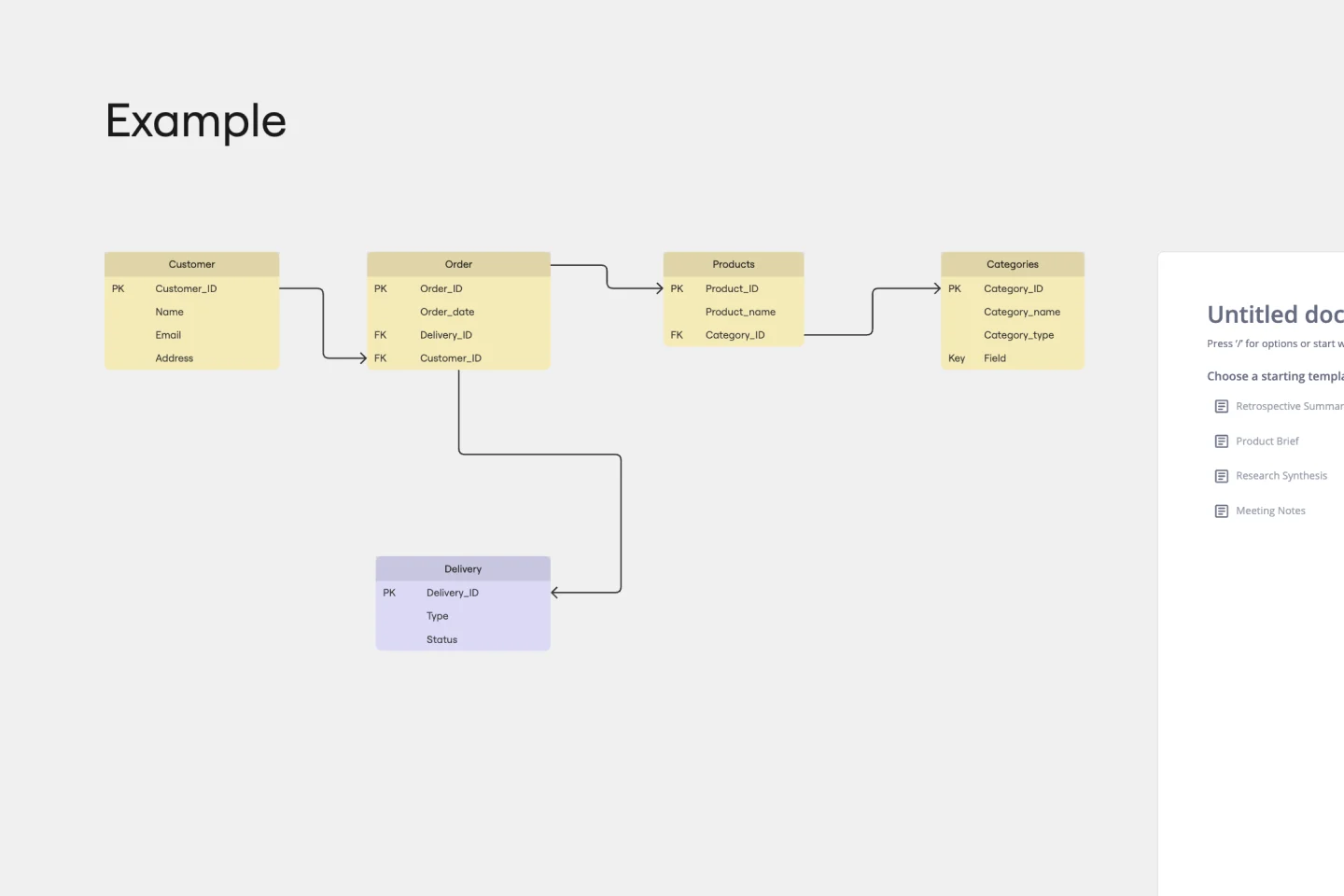About the ERD Blogging System Template
The ERD Blogging System Template streamlines the management and organization of digital content, making it an essential tool for bloggers, content managers, and digital marketers. This template focuses on the key entities involved in blogging systems such as User, Post, Comment, Category, Tag, and File. By using this template, you can efficiently manage the creation, publication, and organization of blog posts, engage with users through comments, categorize content, tag for better searchability, and manage media attachments with the File entity.
How to use the ERD Blogging System Template
Customization: Once the template is added to your board, you can start customizing it to fit your specific needs. This involves adding, removing, or modifying entities such as User, Post, Comment, etc., according to the structure of your blogging system.
Collaboration: Invite team members to collaborate on the board. Miro allows real time and asynchronous collaboration, enabling your team to contribute ideas, leave feedback, and make changes from anywhere.
Integration and management: Use Miro's features to integrate the ERD with other project elements or systems. You can link to documents, add notes, and use Miro's vast array of shapes and connectors to further detail your blogging system's architecture.
Iteration: As your blogging system evolves, so too will your ERD. Use Miro to continuously update and refine your diagram, ensuring it always accurately reflects the current state of your system.
Why use the ERD Blogging System Template
Efficiency: Quickly map out the structure of your blogging system without starting from scratch, saving time and effort.
Clarity: Provides a clear visual representation of how different components of your blogging system interact, making it easier to identify potential improvements or issues.
Collaboration: Facilitates teamwork by allowing multiple users to view, edit, and comment on the diagram in real time.
Flexibility: Easily customizable to fit the unique needs of your blogging system, whether you're managing a small blog or a large content management system.
Documentation: Acts as a living document that can be updated as your system evolves. This ensures that your ERD always accurately reflects the current state of your blogging system, serving as a reliable reference for your team and stakeholders.
Scalability: As your blog or content management system grows, the ERD Blogging System template can be scaled to accommodate new entities and relationships. This makes it an invaluable tool for planning future expansions or restructuring.
Insight and analysis: By providing a visual representation of your blogging system's architecture, the ERD Blogging System template enables you to analyze the efficiency of your content management processes. It helps in identifying bottlenecks or areas for optimization, leading to a more streamlined operation.
Compliance and security: In today’s digital age, managing user data and content securely is paramount. The ERD Blogging System template helps in planning and implementing data management practices that comply with regulations and protect against security vulnerabilities.
Integration readiness: For blogs or content systems that integrate with other platforms or services, the ERD Blogging System template helps map out these integrations clearly. This preparation makes the integration process smoother and less prone to errors.
Using the ERD Blogging SystemTtemplate not only improves the efficiency and clarity of managing a blogging system but also fosters collaboration, scalability, and strategic planning. It's a foundational tool that supports the growth and optimization of digital content strategies.

Miro
Your virtual workspace for innovation
Miro is an innovation workspace designed for teams of every size, everywhere, to dream, design, and build the future together. Our mission? To empower these teams to create the next big thing, powered by AI at every step of the way. Over 90 million users around the world rely on Miro to untangle complex ideas, put customer needs first, and deliver products and services faster. All supported by best-in-class security, compliance, and scalability.
Categories
Similar templates
Entity Relationship Diagram Template

Entity Relationship Diagram Template
Sometimes the most important relationships in business are the internal ones—between the teams, entities, and actors within a system. An entity relationship diagram (ERD) is a structural diagram that will help you visualize and understand the many complex connections between different roles. When will an ERD come in handy? It’s a great tool to have for educating and onboarding new employees or members of a team, and our template makes it so easy to customize according to your unique needs.
Entity Relationship Diagram Template

Entity Relationship Diagram Template
Sometimes the most important relationships in business are the internal ones—between the teams, entities, and actors within a system. An entity relationship diagram (ERD) is a structural diagram that will help you visualize and understand the many complex connections between different roles. When will an ERD come in handy? It’s a great tool to have for educating and onboarding new employees or members of a team, and our template makes it so easy to customize according to your unique needs.